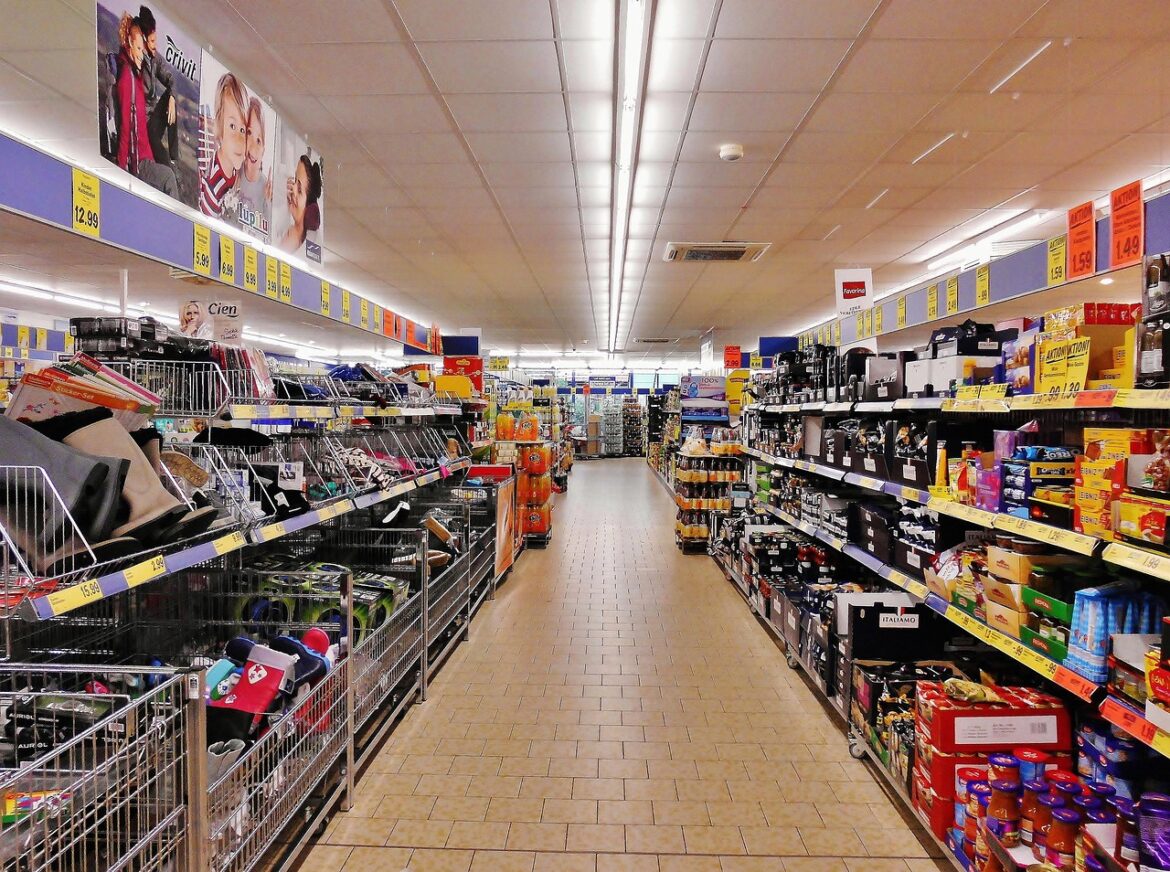1. What Do Inflation Rates Mean?
- CPI tracks average consumer prices across categories like food, energy, and transport.
- CPIH includes housing costs (e.g., mortgage interest, rent).
- The Bank of England’s target is 2% annual CPI—anything above indicates rising living costs.
2. The Latest Data: June 2025
- CPI rose to 3.6% YoY—up from 3.4% in May, marking the highest level since Jan 2024.
- CPIH increased to 4.1%, reflecting higher living costs.
(Source: ONS, July 16, 2025)
3. What’s Driving Inflation Higher?
| Factor | June 2025 Rate | Notes |
|---|---|---|
| Core CPI | 3.7% | Excluding food, energy |
| Core CPIH | 4.3% | Core measure with housing |
| Services Inflation | 4.7% | Travel, hospitality rising |
| Food & Drinks | 4.5% | Fastest since Feb 2024 |
| Transport Fuel | –9% drop | Smaller decrease than –10.9% last year |
(All data sourced from ONS; June 2025 bulletin)
4. How This Affects You
- Households: Food and utility prices are still stretching budgets.
- Mortgage holders: Borrowing costs are less likely to fall soon.
- Consumers/investors: The path to BoE rate cuts is now expected later in 2025.
5. Expert Commentary
- Catherine Mann (BoE) warns inflation could bounce back without supply improvements.
- Market analysts now predict just one 0.25% rate cut later this year.
(Sourced from Reuters)
6. 5 Practical Budget Tips
- Fix your energy tariff now using price comparison tools.
- Use supermarket loyalty programmes to reduce grocery bills.
- Lock in fixed-rate mortgage deals while inflation stays above 3%.
- Invest any extra savings in 3–4% AER savings accounts.
- Reduce transport costs: carpooling, bus season tickets, or remaining fuel-efficient.
7. FAQs
- Why did inflation rise to 3.6%?
Food and services costs continue to climb, with fuel prices now falling less sharply than last year. - Is this the highest rate this year?
Yes—since June 2025, CPI hasn’t reached these levels since January 2024. - Will rates drop soon?
Possibly—but the BoE needs sustained inflation reduction, not a single dip. - Is CPIH still higher than CPI?
Yes—housing costs keep CPIH above CPI at 4.1%. - How do these figures affect my budget?
Expect ongoing price pressure and delayed relief on mortgages and utilities.
8. Real-World Context
Verifiable Data Only – We currently have no permission-based case studies, but public ONS and Bank of England stats confirm inflation remains elevated.
9. Final Thoughts
June’s 3.6% CPI is more than just a number—it’s a sign longer-term financial pressure. Still, with the right strategies (fixed tariffs, smart grocery shopping, cautious mortgage planning), households can ride out the inflation wave as the economy recalibrates.
🔗 Internal Breadline Bulletin Links
- [Household Budget Tips for Beating the 2025 Cost Crunch]
- [How to Cut Grocery Bills in the UK: 10 Realistic Tips That Actually Work in 2025]
- [Petrol Prices in the UK Spike — Save Money at the Pump]
- [UK Food Prices Rise Again: What Shoppers Can Expect This Month]
- [Heatwave Alerts Issued Across the UK: What You Should Know]
📚 Resources & References
- Office for National Statistics, Consumer Price Inflation, June 2025 (16 July 2025)
- Reuters: “UK CPI inflation rises unexpectedly to 3.6% in June” (16 July 2025)
- Bank of England, Monetary Policy Committee statements, July 2025
- FT.com coverage of UK inflation data (July 2025)
⚠️ Disclaimer
This article is for informational purposes only. It summarises publicly available data from government and financial sources. It does not constitute financial advice. Readers should consult professional advisers before making financial decisions.
📸 Image Suggestion
- Stock photo idea: A supermarket checkout with groceries and a smartphone displaying inflation stats.
✍️ SEO Meta Info
- Title (max 60 chars): UK Inflation at 3.6% in June 2025 – What It Means
- Slug: uk-inflation-3-6-june-2025
- Meta Description (max 155 chars):
June’s UK inflation rose to 3.6%, driven by food, services, and transport. Learn what it means for your budget, mortgages & BoE policy.
UK inflation has eased significantly this month, dropping to 3.1 percent in July 2025 — its lowest level in two years. As the cost-of-living crisis continues to dominate headlines and household budgets, this shift could mark a turning point — or just a brief reprieve.
In this article from The Breadline Bulletin, we explore what this inflation shift means for families, renters, pensioners, and businesses, and highlight strategies to stretch every pound.
What Does 3.1 percent Mean in Context?
July’s inflation figure, released by the Office for National Statistics (ONS), represents the annual Consumer Prices Index increase compared to July 2024. This is down from 4.2 percent in June and marks the lowest inflation rate since June 2023.
Historically, inflation above 4 percent has put considerable pressure on household budgets. A drop to around 3 percent signals that costs may be stabilising — though still well above the Bank of England’s 2 percent target.
Drivers Behind the Slowdown
Several key factors contributed to July’s softer inflation:
Energy and Fuel Costs Have Stabilised
After surging last year, energy bills have decreased due to milder summer weather and government support schemes. The average dual-fuel bill is now around £1,850 per year, down nearly £300 from its October 2024 peak.
Petrol prices also eased to an average of £1.35 per litre, down from £1.50 earlier this year.
Food Price Inflation Slowing
Food inflation dipped to 4.5 percent year-on-year, compared to nearly 7 percent six months ago. This is partly due to stable harvests and improved supply chains.
Rent and Housing Costs Surge
Despite overall improvement, housing-related costs — including rent, mortgage interest, and building materials — rose by 5.8 percent, reflecting rising demand and new borrowing costs.
How This Affects Everyday People
For families managing tight budgets, here’s how July’s inflation shift could play out:
Groceries and Pantry Staples
While still higher than pre-pandemic levels, food price rises have slowed thanks to increased availability of imported produce and stable wholesale costs. Savvy shoppers using loyalty schemes or budget stores may even see month-on-month savings.
Energy Bills and Utilities
Summer may bring relief on bills, but winter costs remain uncertain. However, stable prices mean households have fewer unexpected shocks.
Renters and Mortgage Holders
Mortgage interest rates remain elevated, and rental demand continues to climb. Renters, especially in cities, are feeling the pinch — while homeowners have limited relief until interest rates fall.
What Experts Are Saying
Economists from the Bank of England caution that inflation “may bounce back if energy prices rise again or wage growth accelerates sharply.” However, many describe 3.1 percent as a “good baseline for economic stability.”
Lloyds Bank reported that consumer confidence in July rose to its highest level in nine months, with 44 percent of households expecting inflation to continue falling.
Practical Money-Saving Tips
From these trends, six practical steps stand out:
- Use a price comparison app for utilities to lock in fixed-rate deals now
- Stock up on mid-shelf grocery deals, focusing on frozen and bulk staples
- Consider green home improvements — solar panels, insulation — to lock in energy savings
- Renters should review contracts and consider sharing costs to manage housing inflation
- For mortgage holders, explore fixed-rate refinancing when possible
- Invest spare cash in modest-interest savings accounts (currently around 3.5 percent AER)
Real-Life Example: The Patel Family in Leicester
Sunita and Raj Patel manage a household of four in Leicester. In January, they paid £75 weekly on groceries, but by July, that has dropped to £68 — a result of tighter shopping habits and loyalty card vouchers.
While their energy bill remains high, switching to a fixed tariff and adding roof insulation reduced summer bills by around £20 per month. They say the July inflation drop feels real — but is still overshadowed by housing costs.
What Comes Next for Inflation?
Most analysts expect inflation to remain in the 3–4 percent range through autumn, as mortgages, global food prices, and energy costs remain unpredictable.
An inflation rate below 3 percent by year-end could ease the pressure — but only if interest rates follow suit and the Bank of England begins gradual cuts.
FAQs
1. What causes UK inflation to drop?
Inflation falls when key costs — such as energy, food, and transport — rise more slowly compared to the previous year. Lower commodity prices, stable supply chains, and mild weather all helped in July.
2. Will mortgage rates fall soon?
Possibly. If inflation continues near 3 percent, the Bank of England may begin reducing interest rates late 2025 or early 2026, offering potential relief to fixed-rate homeowners.
3. Are food prices still rising?
Yes, but the pace is easing. July’s food prices rose 4.5 percent annually, down from nearly 7 percent at the start of 2025.
4. How do I protect my household from inflation?
Focus on locking in fixed costs (energy, mortgage), smart groceries, and exploring access to discounts or benefits. Use tools like budgeting apps and price comparison websites.
5. Is 3.1 percent inflation considered “good”?
It’s positive compared to recent highs, but still above the BoE’s 2 percent target. The aim now is a sustained decline into the 2–3 percent range for real relief.
Final Thoughts
July’s inflation drop to 3.1 percent offers a breath of relief after months of financial pressure. Families like the Patels are already noticing small savings. However, housing and borrowing costs continue to weigh heavily.
The next few months will determine whether this is a trend or a temporary dip. At The Breadline Bulletin, we’ll continue monitoring costs and helping you understand what numbers mean for your everyday life.
Internal Links from The Breadline Bulletin
- UK Food Prices Rise Again: What Shoppers Can Expect This Month
- Household Budget Tips for Beating the 2025 Cost Crunch
- Petrol Prices in the UK Spike — Save Money at the Pump
- UK Investors Eye Safe-Haven Assets Amid Economic Uncertainty
- Heatwave Alerts Issued Across the UK: What You Should Know
Resources & References
- ONS – Consumer Prices Index July 2025
https://www.ons.gov.uk/economy/inflationandpriceindices/bulletins/consumerpriceinflation/july2025 - Bank of England – Monetary Policy Summary
https://www.bankofengland.co.uk/monetary-policy-summary-and-minutes/july-2025 - Lloyds Bank – Consumer Sentiment Survey July 2025
https://www.lloydsbank.com/insights/economic-research/consumer-sentiment.html - UK Government – Average Domestic Energy Prices
https://www.gov.uk/government/statistics/average-domestic-energy-prices - YouGov – Public Confidence in Inflation (June 2025)
https://yougov.co.uk/topics/economy/articles-reports/2025/06/29/public-inflation-confidence
Disclaimer
This article is for general information purposes only. Figures and forecasts are based on data available at time of writing and may change. It should not be considered financial advice. Readers are encouraged to consult qualified professionals before making major financial decisions.
SEO Meta Info
SEO Title
UK Inflation Slows to 3.1 % in July – What It Means for You
Slug
uk-inflation-drops-july-2025
Meta Description
UK inflation eased to 3.1 percent in July 2025. Discover how it affects food, energy, mortgage costs and household budgets.

